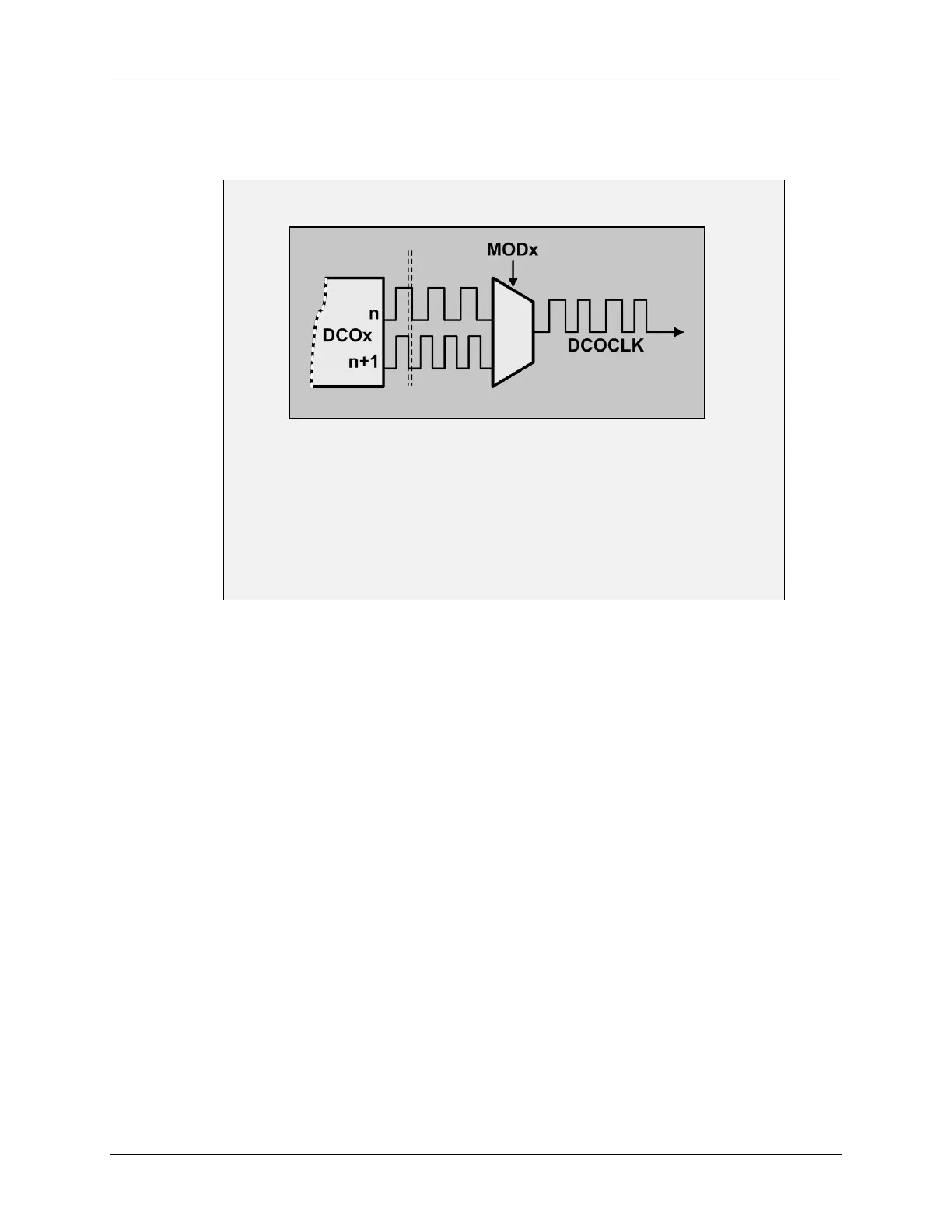DCO Setup and Calibration
This is where the final field, called MOD, comes into play. MOD lets you tell the MSP430 clock to
modulate between two frequency levels: DCO and DCO+1. By mixing these two frequencies you
can obtain a very close approximation to your chosen clock frequency.
DCO Modulation
The modulator mixes two frequencies to produce
the DCO clock
This spreads the clock energy and reduces
electromagnetic interference (EMI)
Due to small jitter, DCO cannot be used to lock a PLL
Naturally, you will probably configure DCO and MOD (and DCORSEL) during system initialization
(probably early in your main() function). If the temperature or input voltage varies over time,
though, you will likely want to tweak (i.e. tune) DCO and MOD to compensate for your systems
changing environment. On older MSP430 devices, these tweaks had to be done in software; on
later devices, hardware was added to automate this task for you. We’ll look at these tuning
options in the next section of the chapter.
4 - 24 MSP430 Workshop - MSP430 Clocks & Initialization

